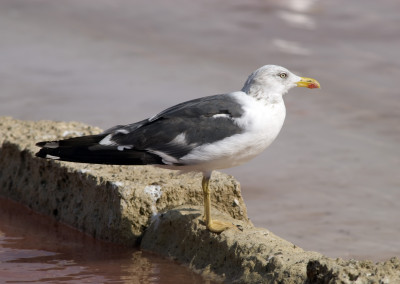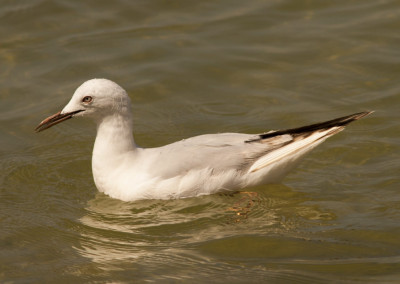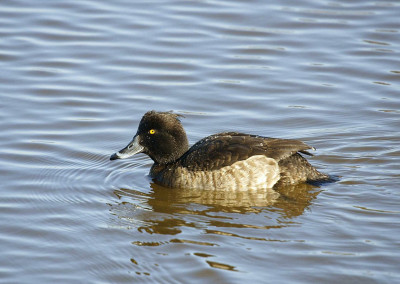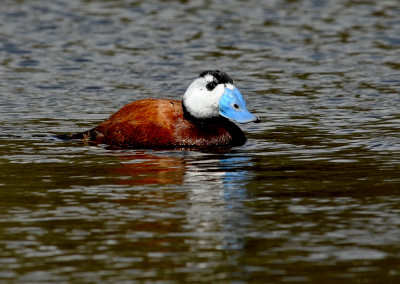Salinas Viejas
For the Nasrids who already ran them during the Middle Ages, these salt pans were known as “Modaguara”. In the 19th century, they were called the Administration Group and were known to be made up of 13 pans separated by walls or “ridges” made of mud and vegetable matter.
The separations between the different pans can still be seen in aerial pictures. During their use, up until the middle of the 19th century, they had different functions: three of them supplied water to the system and were known as the “Springs” and were called respectively the Fish, the West and the East pans.
Another three were used as “Heaters”, i.e. to concentrate the resulting brine and were called the North, the West and the East pans. The remaining seven were where the salt was harvested and were called “Threshers” or “Eras” de la Noria, del Hornillo, Grande, de la Media luna, del Intendente, del Rey and del Salitral.
Together with the groups of the Puntal (currently known as the Charcones de Punta Entinas) and the Charcón (Cerrillos salt pans at the beginning of the 20th century) they were part of the important “Roquetas Saltworks”, salt pans which, until the middle of the 19th century were run first by private individuals and then by a public administrator. These salt pans were state-owned.
It is known that in the late nineteenth century and early twentieth century, they were no longer in operation. This is known from the sale of the saltworks, which was started by the State in 1870 and was not concluded until 1900. At that time, they became the property of Isabel Oliver y Cueto, who later incorporated them into the family salt company, run by her sons, the Acosta Oliver brothers. They did not work this group of pans and in 1924 sold all the salt pans they owned in the province of Almería (the Cerrillos and Cabo de Gata Salt Pans) to an important company that would leave its mark on Roquetas de Mar: La Unión Salinera de España.
It was not until 1952 that these pans would again go into production. Following the union of the Cerrillos, these same pans, those of San Rafael, in addition to the construction of new lagoons (Las Nuevas). Salt was no longer to be extracted on site, as the pans were now considered “evaporators”. The water was pumped up to a third level, next to these salt pans, and the concentrated brine was carried along a channel which was almost five kilometres long, to the Salinas de San Rafael, where the salt was harvested starting in 1953.
At present, it looks like one large lagoon, it is only in aerial photographs or when the levels drop significantly that the parcelling can be seen. Actually, in 1953 the 13 ponds that existed until then became two, and later three, with a total area of about 65 hectares. This is the large pond that can be seen today.
Since the salt pans were abandoned as a business in 1986 until the present day, the influence of the underground water that discharges here due to its extraordinary geology, has not only maintained the water levels in the pond, but it has also made it deeper. The lack of maintenance work around the edges and the progressive ‘freshening’ of the water due to this underground supply has consolidated a dense belt of reeds, and in some places even bullrushes, that surrounds the whole of the Salinas Viejas.
Due to its characteristics, it is an exceptional place to conveniently observe birds swimming and diving, from the easily accessible ‘Cerrillos’ Avenue.


Birds to be found here

Common Tern

Mediterranean Gull

Black Tern

Sandwich Tern

Lesser Black-backed Gull

Audouin´s Gull

Slender-billed Gull

Black-headed Gulls

Little Ringed Plover

Common Ringed Plover

Collared Pranticole

Eurasian Coot

Purple Swamphen

Common Moorhen

Black Stork

Tufted Duck

Common Pochard

Garganey

Northern Pintail

Eurasian Teal

Gadwall

Eurasian Wigeon

Purple Heron

Grey Heron

Little Egret

Cattle Egret

Black-crowned Night Heron

Little Bittern

Great comorant

Black-necked Grebe

Little Grebe

Little Tern

Yelow-Legged Gull

Northen Shoveler

Great Crested Grebe

White-headed Duck

Red-crested Pochard

Marbled Duck

Mallard

Common Shelduck

Black-winged Stilt

